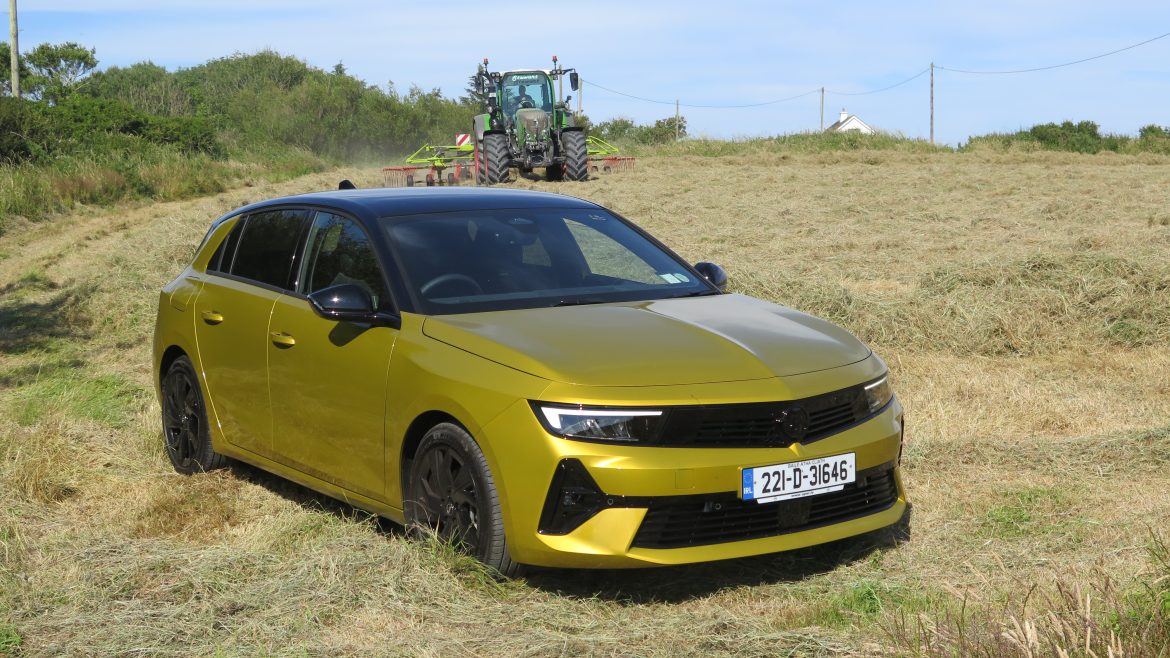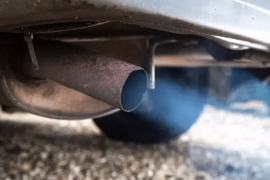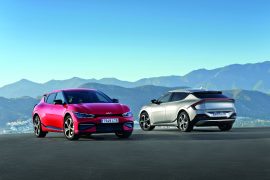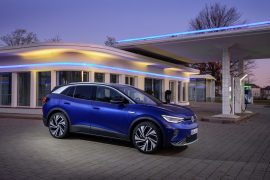The Opel designers have brought the image of the new Astra from the mundane to the exciting in one stroke to make this fifth-generation car one of the most attractive looking cars for 2022. The new vizor front end design gives a positive perception of the car immediately; it turned heads everywhere while not abandoning its Opel heritage, as Michael Moroney reports.
It some respects that’s quite a stroke of design genius to fully modernise a car design in a way that’s vastly different, while retaining the subtlety of the Opel brand. That’s probably one of the reasons that the new Opel Astra speaks for itself in design terms.
The changes are not simply skin deep. Inside the new Astra the cockpit design is equally impressive. The Pure Panel digital cockpit gives a modern feel to the car’s interior with two 10-inch seamlessly integrated horizontal displays, now standard across the 3 trims.
While the panel is modern Opel, has retained physical controls for some key settings such as climate control, in a smart balance that allows you to quickly get comfortable with the basic controls. These are important features for the car rental market where short-term renters don’t have the time or enthusiasm for complex settings. And that market has been so important for the pervious generations of the Astra.
Opel’s new generation infotainment systems can be connected as standard on all model variants to wireless Apple CarPlay and Android Auto, operated by voice control or by touch. These are systems that are common across all ranges, so moving to an Astra is seamless in terms of connectivity.
Opel offers a range of engine options including petrol, diesel, and hybrid. For me, the diesel version was my first choice, and it delivered an enviable level of economy. Opel uses an upgraded 1.5 litre turbo-diesel engine, similar to that used in all of the Stellantis family of cars.
This engine was lively, if not a little noisy, while most importantly it delivered impressive economy. The car’s 52 litre capacity fuel tank gave me a range of over 1,100 km on a fill, and that delightfully compared almost exactly with the Opel rated figure. The official rating for the Opel diesel is 22.2litres/kilometre (4.5l/100km or 63mpg) and in practice, it achieved that very well, aided by an AdBlue system to keep the exhaust emissions so low. That’s why it baffles me that the world (at least part of it) has turned to negative towards diesel when it can deliver such outstanding economy.
This engine was matched to a six-speed manual gearbox that was effortless to use. The car is powerful in terms of acceleration and a fair match in performance terms for the bigger engine Volkswagen Golf or the similar engine size Ford Focus. The toned down 2.0 litre Golf diesel engine is also marginally more economical with slightly lower emissions.
The new Opel Astra is a lower slung car that the now popular SUV type cars. That makes getting in and out a new challenge that becomes more noticeable. This car is built on the new Stellantis EMP2 multi-energy platform and it’s also used in the new Peugeot 308. That’s probably why I had an innate Peugeot feeling on occasions when I drove this new Astra and I couldn’t explain just why.
This platform gives the car impressive handling. With its sleek design it hugs the road, and you will always feel in control.
The seat position is lower than I would always like, and I did get to that comfortable space, it just took me a little longer than normal. There is good legroom in front while the rear is tighter, but there is no issue with head height.
This Astra is marginally longer than the car that it replaces and is also longer than the Volkswagen Golf and the new Peugeot 308. It shares an identical wheelbase with the new Peugeot 308 and is shorter than Ford’s latest Focus model.
Boot space is impressive, giving it the largest boot space in my four-model comparison that include the Ford Focus, Peugeot 308, and Volkswagen Golf. Moving the rear seats down with ease retains that spacious feel thought the Focus wins out at that point. Unfortunately, the bigger boot does not include a spare wheel.
The Astra has not compromised in terms of steel, it is heavier than the Ford Focus and Volkswagen Golf, while the new Peugeot 308 tops the group on the scales. It is interesting that the extra weight does not impact on the performance or economy of the car, a credit to the Opel engineers.
This new Astra comes with a high level of safety kit including Electronic Stability Programme (ESP), Electronic Braking Distribution (EBFD) and forward collision alert. The entry models include adaptive cruise control, lane keep assist and automatic emergency braking with pedestrian detection along with traffic sign recognition. Just like the recently introduced Peugeot 308, the new Astra also failed to achieve a 5-star rating in the recent Euro NCAP safety tests, which is disappointing but not overly concerning because the test criteria have changed. The Stellantis Group, which now owns Citroen, DS, Fiat, Opel, and Peugeot brands needs to address this issue as a priority safety performance measure.
Is the Astra value along with its style? The entry price for the diesel version of the new Opel Astra starts at €30,995, which makes is marginally more expensive than the Ford Focus, while being significantly lower in price than the equivalent Peugeot 308 and Volkswagen Golf. Against the competition, on price alone that modern styling is competitive.
In another context, the entry Astra diesel price has risen by more than €5,000 over the older model of a year ago, that’s a hefty 20% price increase for a lot more style. That’s a measure of how the car market has changed.
For me, this new Astra is a stunning car that delivers is so many ways. The colour choices add to its attractiveness as a modern and economical car to own and drive.
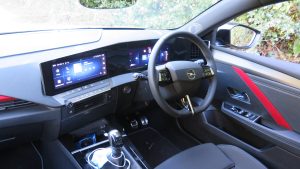
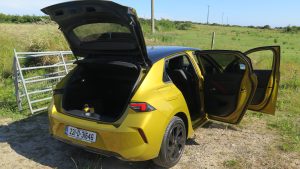
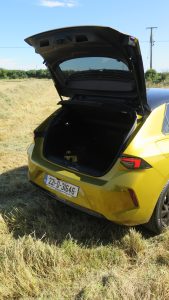
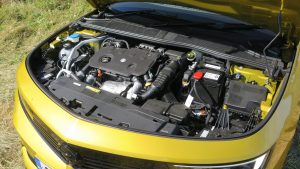
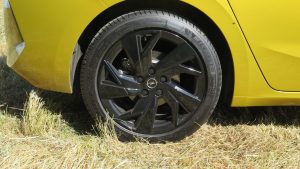
| Opel Astra 1.5 Diesel – specifications | |
| Engine | 1.5 litre |
| Engine power | 130bhp |
| Engine Torque | 300Nm |
| 0 – 100km/hr | 10.6 seconds |
| Economy (WLTP) | 22.2km/litre (4.5/100km or 63mpg) |
| Fuel Tank Capacity | 52 litres |
| CO2 emissions | 113g/km |
| Range (theoretical) | 1144km |
| Road Tax Rate | €190 |
| Main Service | 30,000km/12 months |
| Euro NCAP Rating | 4 Star (2022) |
| Vehicle Length | 4374mm |
| Gross Weight | 1920kg |
| Towing rating | 1550kg |
| Luggage Capacity | 571 litres/1760 litres |
| Warranty | 3 years |
| Entry Price | €30,995 |

